Sabrent Rocket 4 Plus 2TB Performance Testing
We are moving towards using larger test sizes on our benchmarks, but on several tests, we also used the smaller default test sizes. This allows us to see the difference between lighter and heavier workloads.
CrystalDiskMark 7.0.0 x64
CrystalDiskMark is used as a basic starting point for benchmarks as it is something commonly run by end-users as a sanity check.
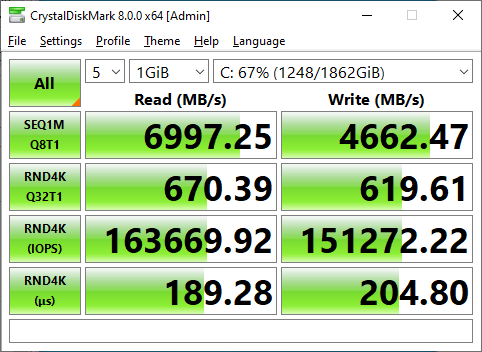
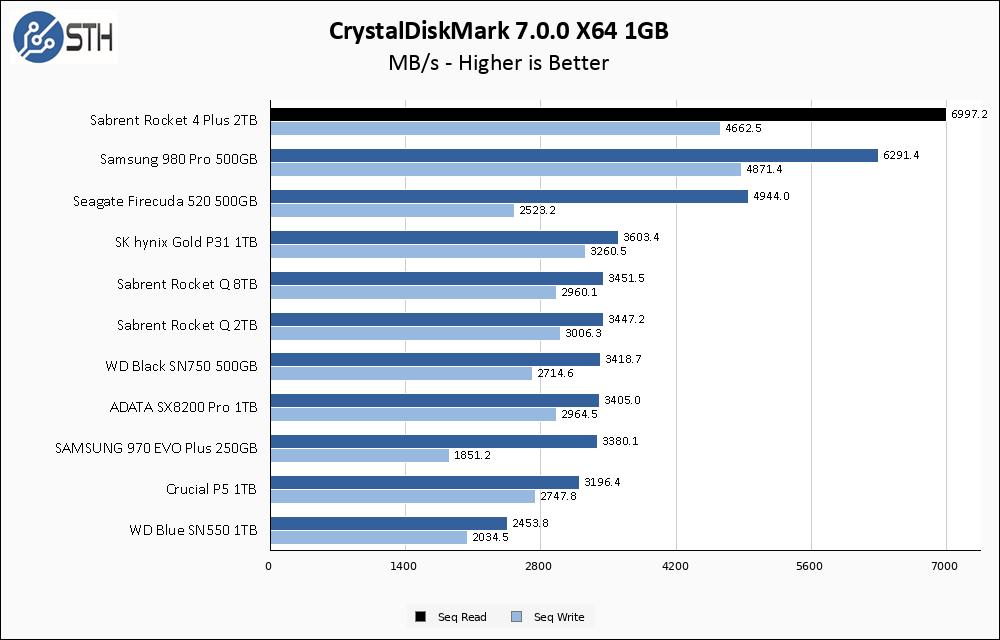
The Rocket 4 Plus 2TB is starting off well, taking the crown for our highest ever sequential read score at just under 7000 MB/s in CrystalDiskMark, and our second highest write score, narrowly losing to the Samsung 980 Pro 500GB. Those numbers are very impressive, though both fall a bit short of the rated 7100 MB/s read and 6600 MB/s write promised on the spec sheet.
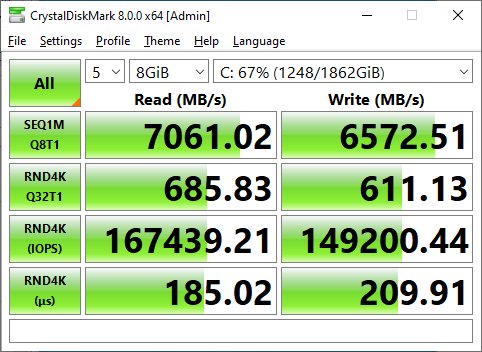
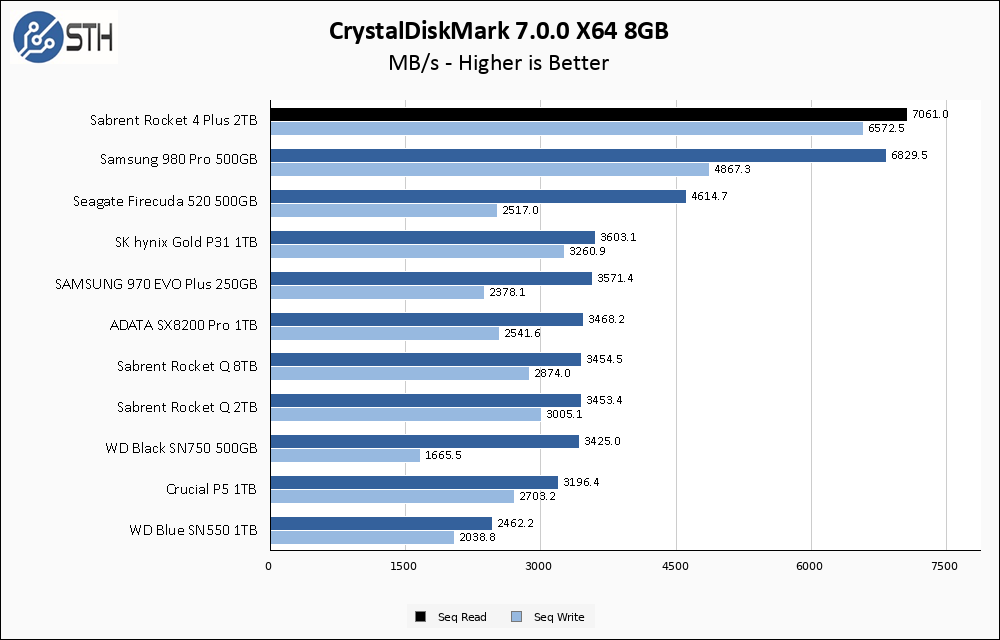
Moving to the larger 8GB test set allows the Rocket 4 Plus 2TB to stretch its legs, improving its overall performance and coming very close to the rated speeds.
ATTO Disk Benchmark
The ATTO Disk Benchmark has been a staple of drive sequential performance testing for years. ATTO was tested at both 256MB and 8GB file sizes.
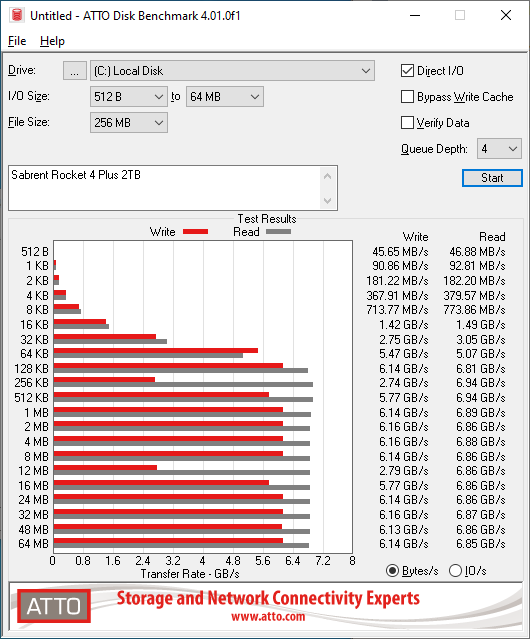
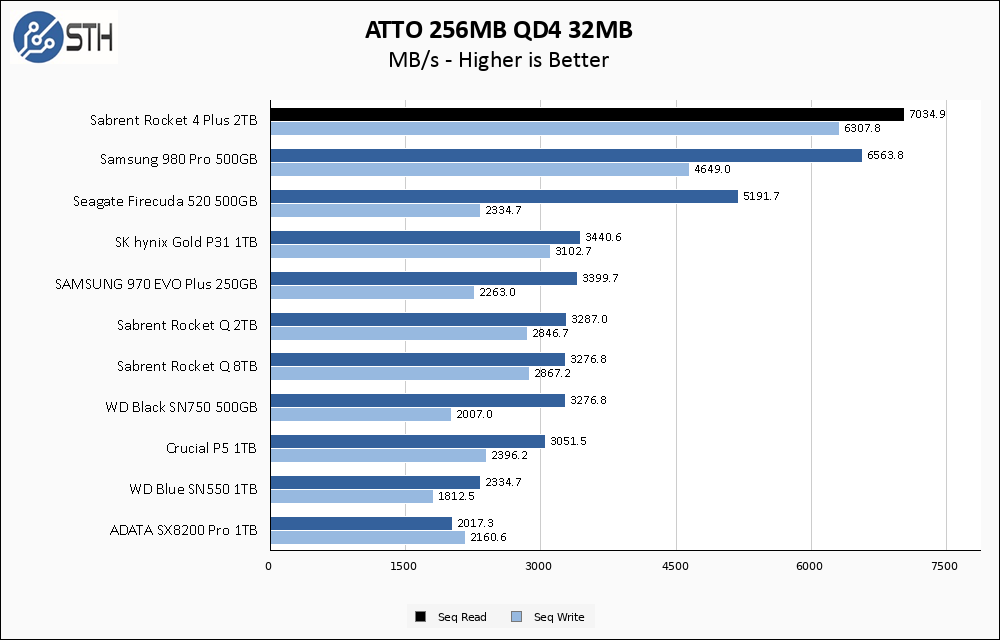
The chart-topping performance continues for the new Rocket 4 Plus drive, and the sequential performance observed comes very close to the rated speeds, especially in the read benchmark.
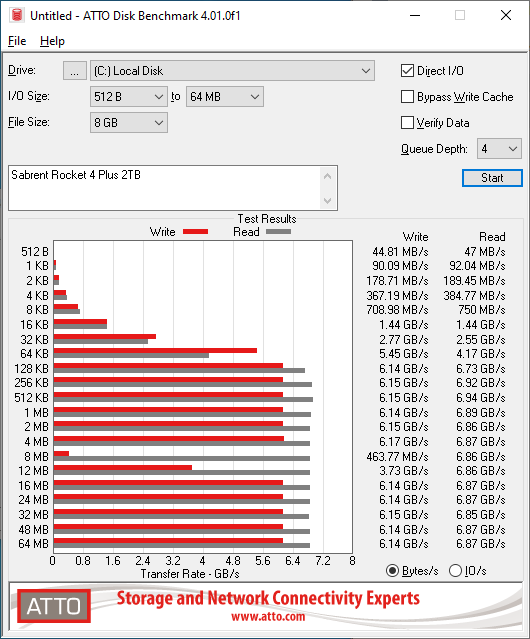
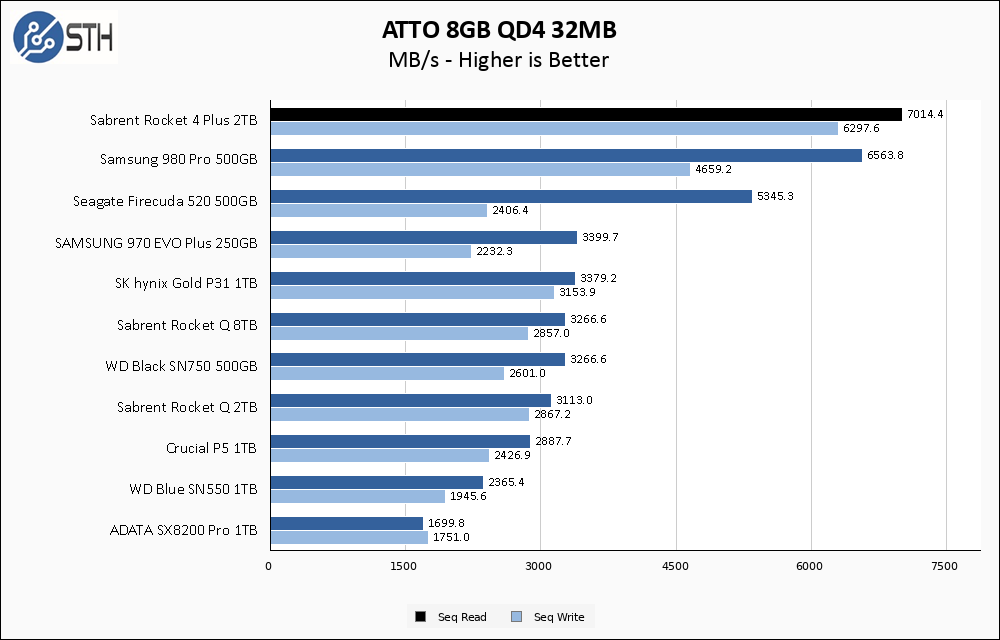
Unlike in CrystalDiskMark, the Rocket 4 Plus performed to spec on the smaller test set, thus the move to the larger 8GB ATTO test has negligible effect on the performance.
Anvil’s Storage Utilities
Anvil’s Storage Utilities is a comprehensive benchmark that gives us a very in-depth look at the performance of drives tested. This benchmark was run with both a 1GB and 8GB test size.
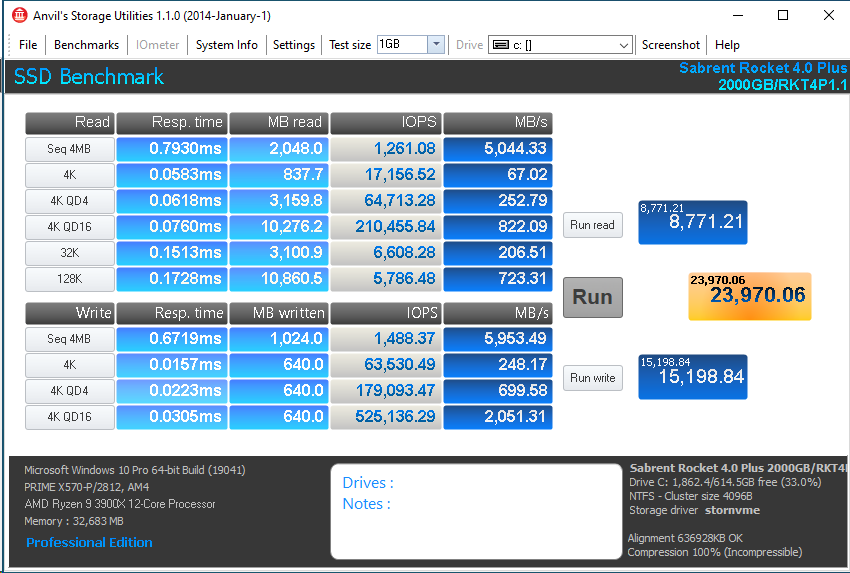
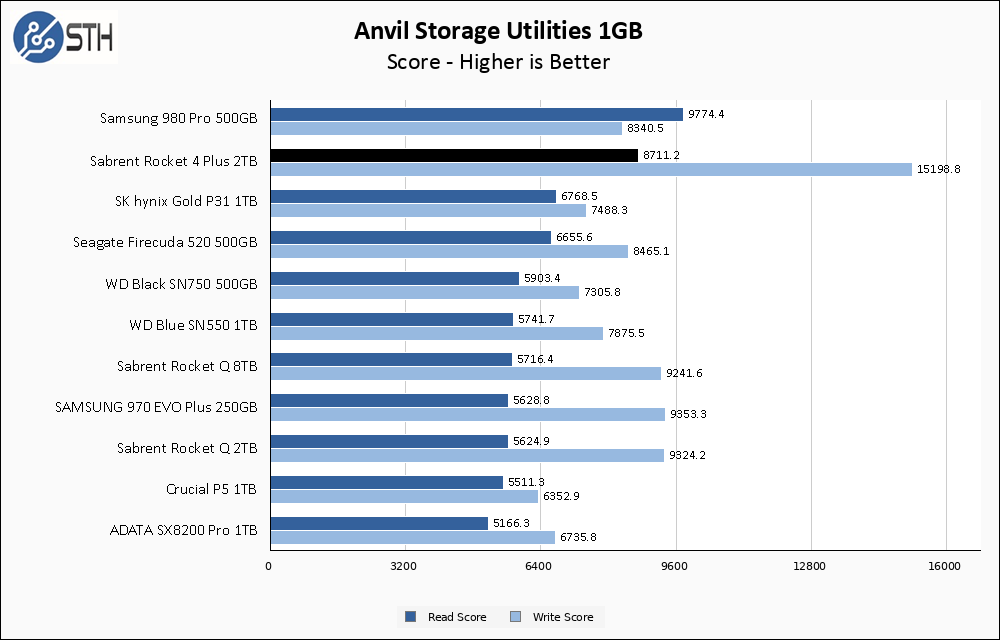
We order this chart by read score, where the Sabrent Rocket 4 Plus 2TB takes a narrow loss to the Samsung 980 Pro. On the other hand, the write score is easily the best we have ever seen and dwarfs the Samsung’s result. Part of this can be attributed to the size differential between the two drives of course, but it is a great result for Sabrent no matter how you look at it.
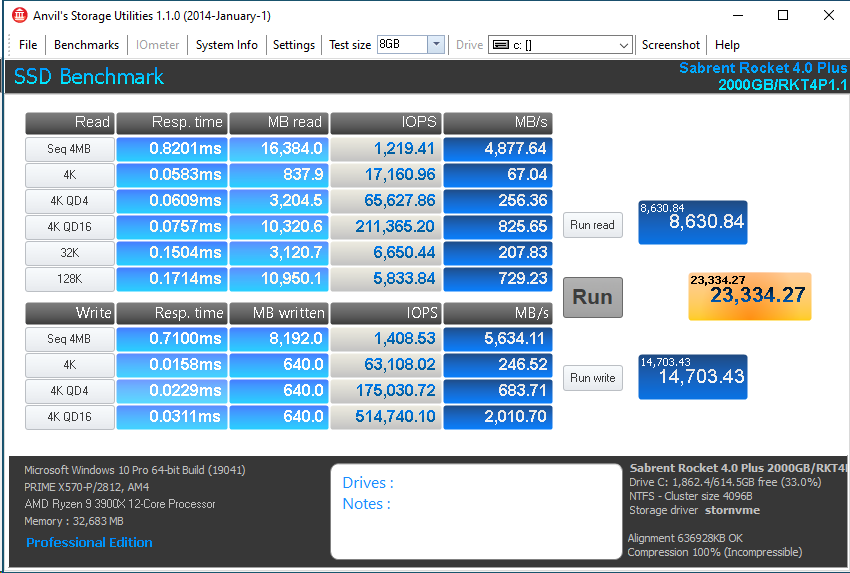
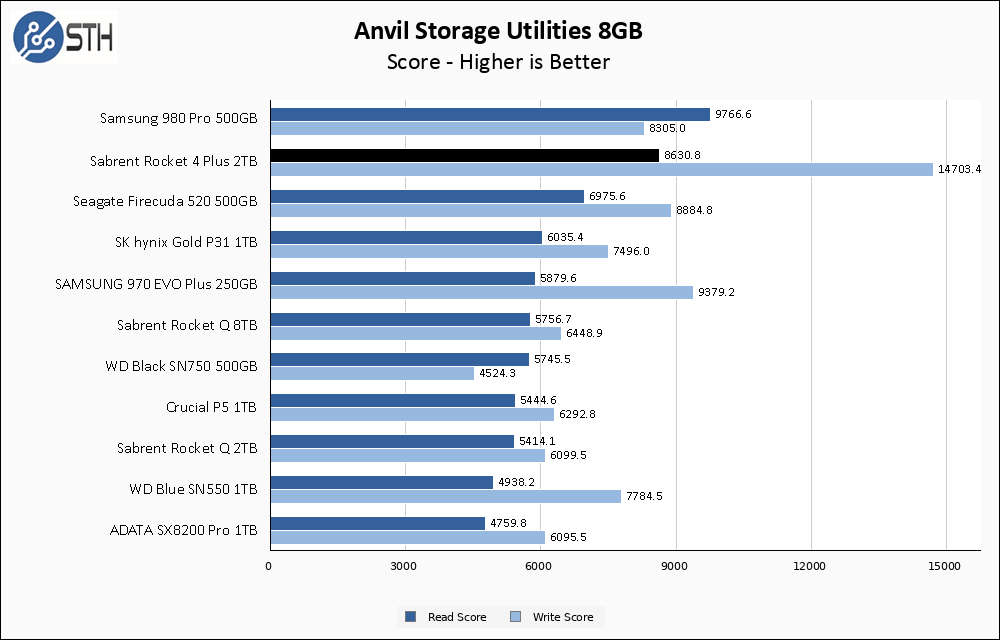
Results at 8GB largely mirror those from the 1GB test. The Sabrent Rocket 4 Plus 2TB is nearly chart-topping for read score and is the runaway winner for write score.
AS SSD Benchmark
AS SSD Benchmark is another good benchmark for testing SSDs. We run all three tests for our series. Like other utilities, it was run with both the default 1GB as well as a larger 10GB test set.
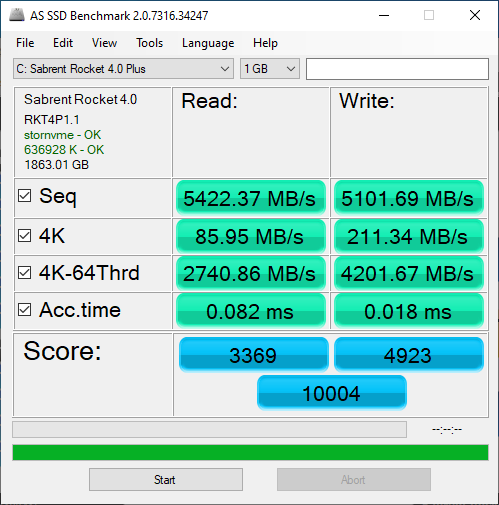
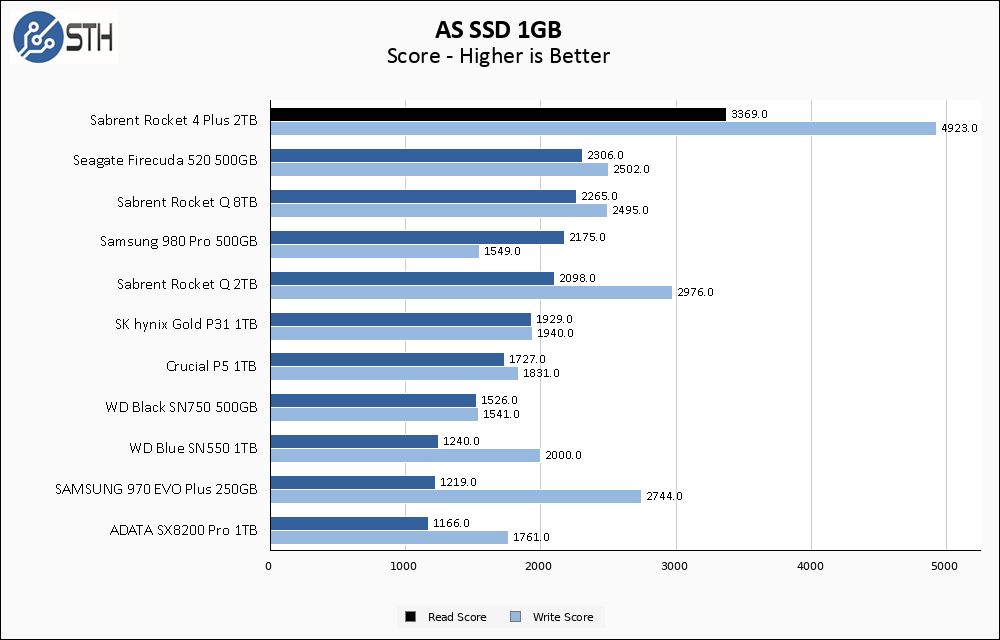
When we reviewed the Samsung 980 Pro 500GB, the only benchmark it did not win outright was AS SSD, so I was curious where the Sabrent would land. At the top would be the answer; whatever difficulty the Samsung drive encountered in AS SSD was obviously not a problem for the Rocket 4 Plus 2TB. Both read and write scores turned in the best we have ever recorded, and the write score margin of victory is gigantic.
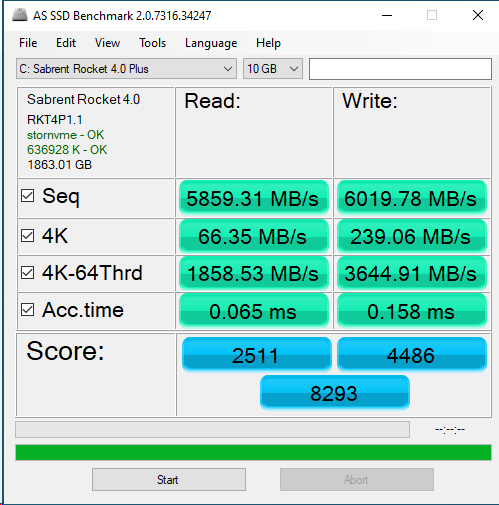
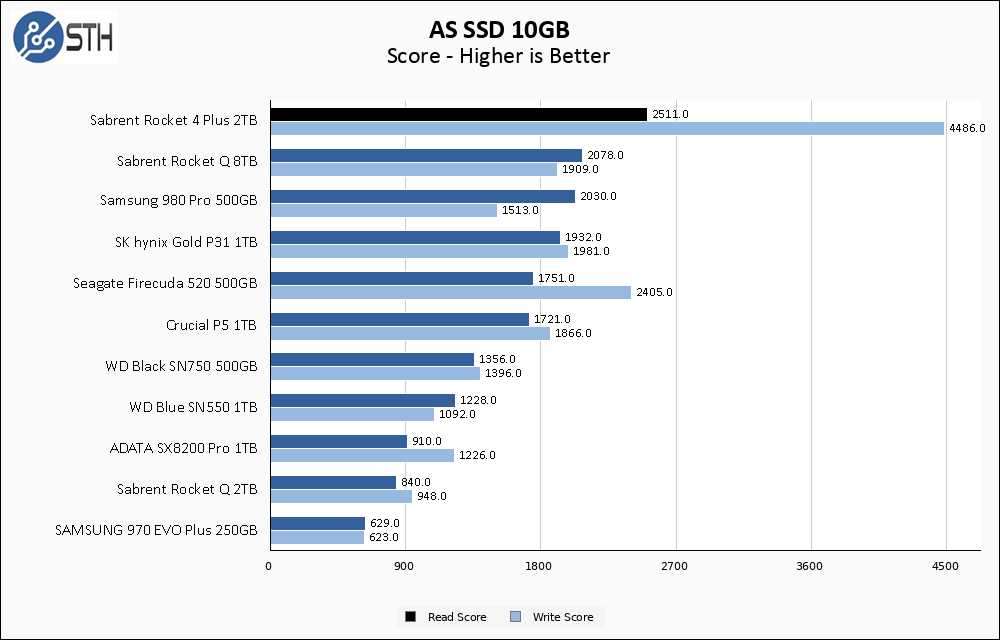
Moving to the larger AS SSD 10GB test is mostly a repeat of the smaller benchmark; the Sabrent Rocket 4 Plus 2TB continues to run up the score compared to everything we have looked at previously.
SPECworkstation, thermals, and our conclusion are up next.




Impressive drive. If this holds up on the datacenter side, lots of people are going to get their links saturated soon. On a side note, I’d like to know when we can start expecting general availability of PCIe 4 datacenter drives, such as Kioxia’s CD6 and Samsung’s offering (if they’ve announced one yet).
Consumer drives like this have excellent performance, but some PCIe 4 write-optimized drives with PLP will be a welcome sight.
Trim $150 off the price and get back to us! :)
Hello Will,
Can you try and test the sabrent m.2 with a pci nic? I tried the same m.2 in several server mb but could not get it past the pci enumeration during boot up. This only happened when we had a nic card in one of the pci slots. The same boards worked correctly with the non-plus version of their same m.2. the sabrent rocket plus would boot properly whenever we removed all of the nics. the specific motherboards that we tried were the asrockrack romed8, tyan dual socket rome server (long ass model #!) and supermicro h12ssw-in. All with the same issue, wouldn’t boot when there was any nic (specific nic was a mellanox connectx5-516-cdat dual port 100G pcie 4.0). take all of the nics out and would boot fine. we also did not have any issues with the previous gen of sabrent rocket 1TB (non-plus) gen 4. It was very fast when we removed the nics but couldn’t resolve this issue. we are not sure if it was just a bad m.2 or maybe an issue with nvme 1.4 or 2TB or a combo. Have the 2TB WD black 850 on order to compare.
Thanks for the review and any insight you can add,
jp
I’m pretty sure a AMD Ryzen 5 3900X doesn’t exist.
Bob,
Fixed.
“Trim $150 off the price and get back to us!”
Really? What nvme at $250 that is 2TB can even compare to the performance of this drive? In fact its a bit cheaper than the competition that is near that level.
@Mharris. It is the NAND that is by far the largest cost in the BOM, probably over 85 % of the BOM if not 90 % . The only reason they can charge double price for same capacity as PCIE 3.0 drive is because of lack of competition currently. They even use less expensive and lower endurance NAND than previous generation (Samsunf and WD are doing the same) when you think of it the price is actually completely crazy.
@Rodi…again, look at the market, why would they price it even lower when Samsung and WD with comparable drives are priced higher, THAT is my point. I am not talking about what the price should be for all of them, that is a different story of course.
I’m curious about this as a secondary gaming drive. I still feel that something like an Optane is better (Despite lower overall performance) for OS work. Single threaded, random I/O stuff nothing touches the 905p still. I wish Alder Stream would break cover and give us an upgraded option with larger storage.
I would like to see WD SN850 2TB charts with Game Mode On with Latency Test compared to Rocket Plus 2TB. I heard Sn850 is 2 second faster when loading Windows10 and games.